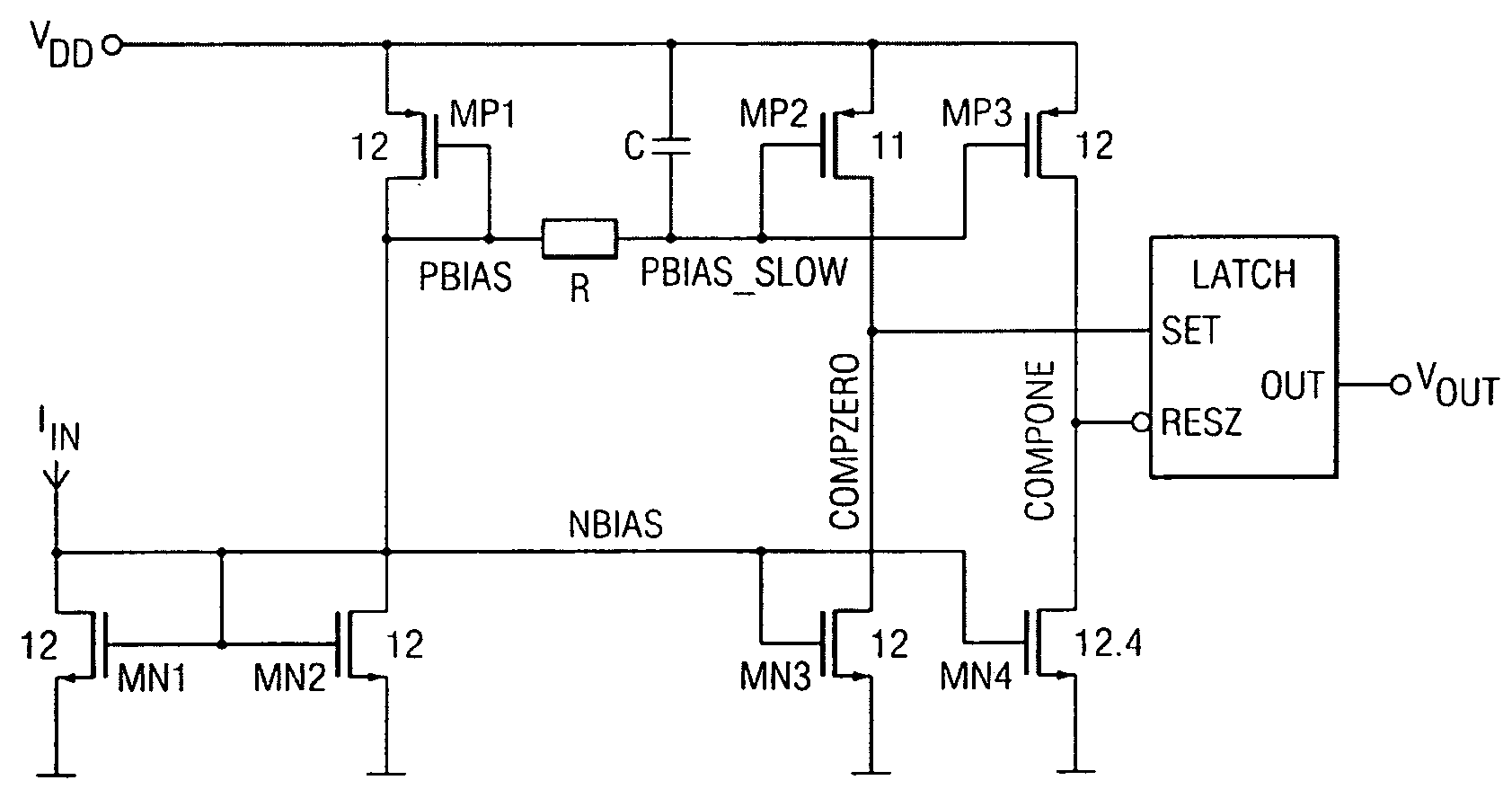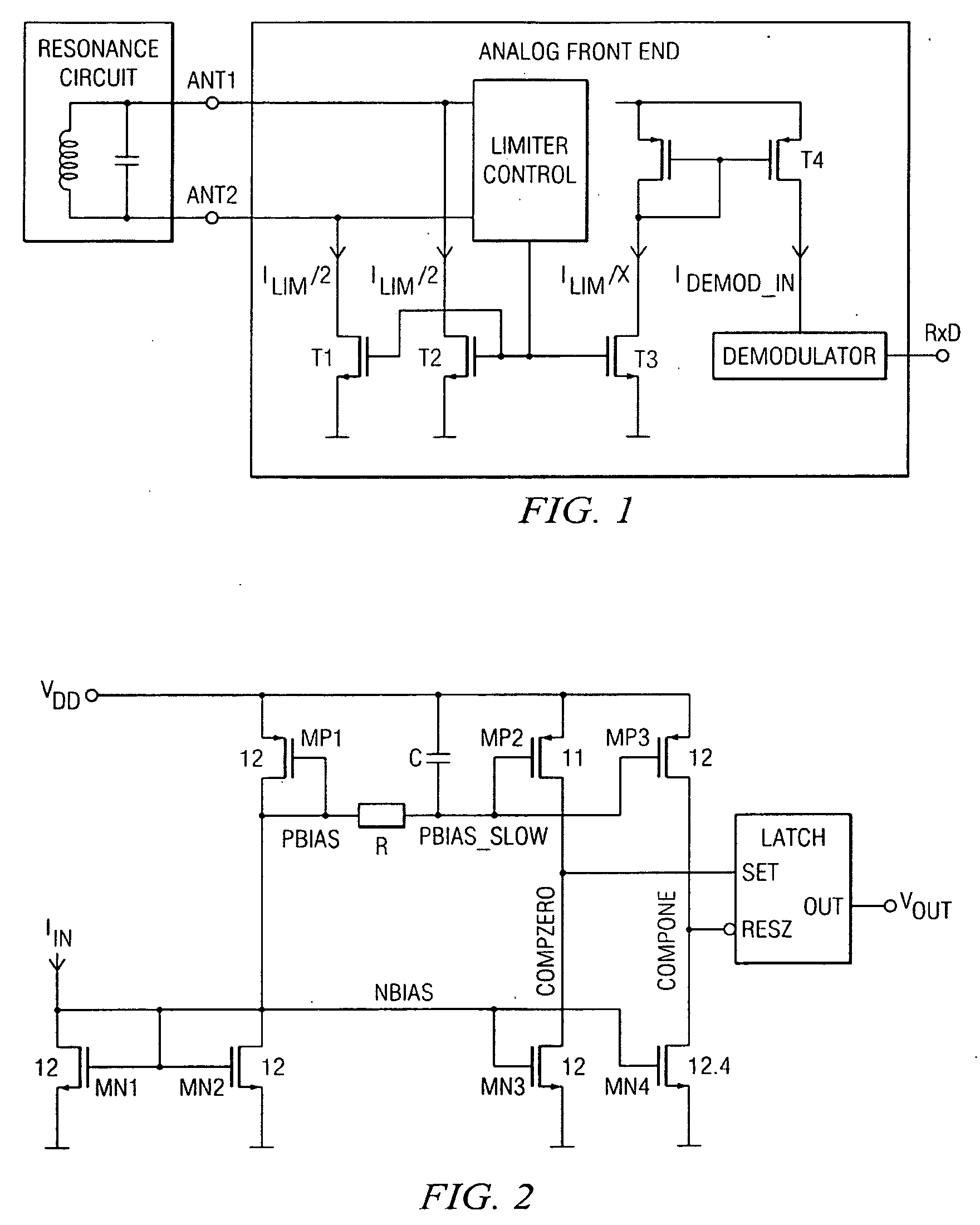High dynamic range ask demodulator for use in an RFID transponder
a demodulator and dynamic range technology, applied in pulse manipulation, pulse technique, instruments, etc., can solve the problems of small drain-source and gate voltage, too high swing in a range of 8v for integrated cmos circuits implemented in advanced cmos technology, and severe clamping of voltage swing from ask downlink modulation, etc., to achieve stable demodulator sensitivity
- Summary
- Abstract
- Description
- Claims
- Application Information
AI Technical Summary
Benefits of technology
Problems solved by technology
Method used
Image
Examples
Embodiment Construction
[0019]With reference first to FIG. 1, a transponder has an external LC resonance circuit and an analog front end with input terminals Ant1 and Ant2 connected to the LC resonance circuit. Each of the input terminals Ant1 and Ant2 has an associated limiting transistor T1, T2 the gates of which are interconnected and driven by a limiter control block which is also connected to both input terminals Ant1 and Ant2. Each of the transistors T1 and T2 draws half of the limiter current, ILIM / 2. A transistor T3 mirrors the limiter current ILIM / 2 to ILIM / x and a further transistor T4 mirrors the current ILIM / x to IDEMOD—IN, which is the input current IIN to the ASK demodulator circuit of FIG. 2. The output signal R×D of the ASK demodulator corresponds to the output signal VOUT in FIG. 2.
[0020]The ASK demodulator in FIG. 2 receives as its input IIN the copied limiter current IDEMOD—IN from the voltage limiter circuit in FIG. 1. The input stage of the demodulator is a diode-connected NMOS transis...
PUM
 Login to View More
Login to View More Abstract
Description
Claims
Application Information
 Login to View More
Login to View More - R&D
- Intellectual Property
- Life Sciences
- Materials
- Tech Scout
- Unparalleled Data Quality
- Higher Quality Content
- 60% Fewer Hallucinations
Browse by: Latest US Patents, China's latest patents, Technical Efficacy Thesaurus, Application Domain, Technology Topic, Popular Technical Reports.
© 2025 PatSnap. All rights reserved.Legal|Privacy policy|Modern Slavery Act Transparency Statement|Sitemap|About US| Contact US: help@patsnap.com



